BLOG - Page 42
Recently created mixtures:

Sea-Buckthorn Macerated oil
February 7, 2019

Home made air freshener
June 29, 2016

Homemade Dog-rose distillate
June 28, 2016

Homemade jasmine distillate
June 22, 2016

Moxibustion treatment with Moxa stick
May 30, 2016

Face and body gentle oil cleanser
May 26, 2016
BLOG / LATEST ADDITIONS!
Tea Tree Essential Oil (Melaleuca Alternifolia) ☸ Essential oils ☸ Base / General
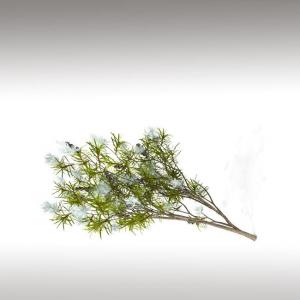

Botanical Name: Melaleuca alternifolia
Common Method of Extraction: Steam Distilled/ aqueous distillate
Part Typically Used: From the leaves
Color: From pale yellow to nearly colorless and clear.
Consistency: Thin
Perfumery Note: Middle
Strength of Initial Aroma: The oil has been described as having a fresh, camphor-like, light spicy, woody, earthy, herbaceous, rather pungent smell.
Tea Tree oil, or Melaleuca oil, is an essential oil with a fresh camphoraceous odor and a color that ranges from pale yellow to nearly colorless and clear. It is taken from the leaves of the Melaleuca Alternifolia, which is native to Southeast Queensland and the Northeast Coast of New South Wales, Australia.
Tea Tree oil should not be confused with Tea oil, the sweet seasoning and cooking oil from pressed seeds of the tea plant Camellia Sinensis.
The name Tea Tree is used for several plants, mostly from Australia and New Zealand, from the family Myrtaceae, related to the myrtle. the term has been adopted by the Australian Therapeutic Goods Administration as the official name for TTO. The use of common plant names further confounds the issue. In Australia, “Tea Trees” are also known as “Paperbark trees”.
When left to grow naturally, Melaleuca Alternifolia grows to a tree reaching heights of approximately 5 to 8 meters. Trees older than 3 years typically flower in October and November, and flowers are produced in loose, white to creamy colored terminal spikes, which can give trees a “fluffy” appearance.
This essential oil has been used for almost 100 years in Australia but is now available worldwide both as neat oil and as an active component in an array of products. Melaleuca Alternifolia plant that presumably exploited this property was the traditional use by the Bundjalung Aborigines of northern New South Wales.
Experts consider Tea Tree oil to be safe as a topical treatment, and you can apply it directly to the skin on a daily basis. When applied to the skin in its pure (100% oil) form, Tea Tree oil seldom causes irritation.
Submitted by OperaDreamhouse (May 4, 2014)
Tea Tree Essential Oil (Melaleuca Alternifolia) ☸ Essential oils ☸ Spiritual Practises


Melaleuca Alternifolia essential oil eases mental stress and purifies the mind and body of emotional wounds. Once old wounds are released (or healed), the body can then change the behavioral patterns that led to the wounding to begin with.
The emotional roots are often associated with distrust of self or others, guilt and shame. Of all which, can be released with the assistance of Tea Tree.
Used in meditation:
This oil will actually expand all the Chakras and then align them with the Crown Chakra.
The emotional roots are often associated with distrust of self or others, guilt and shame. Of all which, can be released with the assistance of Tea Tree.
Used in meditation:
This oil will actually expand all the Chakras and then align them with the Crown Chakra.
Submitted by OperaDreamhouse (May 4, 2014)
Holy Basil Essential Oil (Ocimum Sanctum) ☸ Essential oils ☸ Base / General
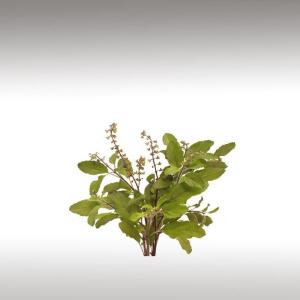

Botanical Name: Ocimum sanctum
Common Method of Extraction: Steam Distilled
Part Typically Used: Leaves and Flowers/Buds
Color: Pale Yellow
Consistency: Thin
Perfumery Note: Top
Strength of Initial Aroma: Strong, warming and spicy.
Ocimum Tenuiflorum, also known as Ocimum Sanctum, Holy Basil, or Tulasī, is an aromatic plant in the family Lamiaceae which is native to the Indian Subcontinent and widespread as a cultivated plant throughout the Southeast Asian tropics.
Submitted by OperaDreamhouse (May 4, 2014)
Turmeric Essential Oil (Curcuma Longa) ☸ Essential oils ☸ Base / General
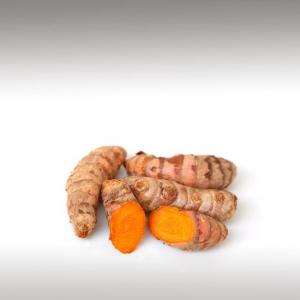

Botanical Name: Curcuma Longa
Common Method of Extraction: CO2.
Part Typically Used: Extraction pulls out all oil friendly compounds from turmeric root. At Living Libations, we use a topical application of the extracted root instead of the typical powder capsules, which cannot capture all of the soluble medicinal properties of the oil.
Color: Yellow to brown liquid
Consistency: Thin
Perfumery Note:
Strength of Initial Aroma: sweet wood with subtle hints of spice
Turmeric is a native to South Asia , particularly India , but is cultivated in many warm regions of the world. It can be found growing extensively in all of India , but does especially well in the regions of Tamil Nadu, West Bengal, and Maharashtra.
Turmeric became valuable to humans when it was discovered that the powdered rhizome preserved the freshness and nutritive value of foods. It was originally used in curries and other food to improve storage conditions, palatability, and preservation. Because of its preservation properties, Turmeric played a vital role in survival and sustainability in South Asia , and was valued more than gold and precious stones.
Turmeric (Curcuma longa root) has been used medicinally for thousands of years. Also known as "Indian Saffron", the aroma, too, is simply wonderful.
Turmeric oil is used in food for coloring and spice effect. Turmeric used as spice il is in food industry.
The Latin name for Turmeric is “Curcuma Longa”, which comes from the Arabic name for the plant, “Kurkum”. It comes from the Zingiberaceae family (same as Ginger) and in Sanskrit is called “Haridra” (The Yellow One), “Gauri” (The One Whose Face is Light and Shining), “Kanchani” (Golden Goddess), and Aushadhi (Herb). It is called “Jiang Huang” in Chinese, and “Haldi” (Yellow) in Hindi, the most common name in India.
Turmeric is a native to South Asia , particularly India, but is cultivated in many warm regions of the world. It can be found growing extensively in all of India , but does especially well in the regions of Tamil Nadu, West Bengal , and Maharashtra.
It is also cultivated in Sri Lanka , Indonesia, China, Taiwan, Indochina, Peru, Haiti, and Jamacia.
India is the largest producer in the world: Jamacia and Peru are the chief exporters, and Iran the largest importer. Other large importers are the United Kingdom, Japan, Canada, Sri Lanka, Singapore and the Middle East.
When analyzed Turmeric oil may show the presence of 400 - 500 different kinds of molecules. What is even more amazing is that many of these molecules have receptor sites in our neuroendocrine systems too.
Turmeric mixes well with other spice oils, and other joint and muscle care oils.
You can seldom find an Indian kitchen without this noble herb named "Turmeric", used since 4000 years in the ancient healing system known as Ayurveda. Ayurveda has proudly named Turmeric as an "All-Purpose Cleanser",
This powerful essential oil can be diluted with carrier oils and used as a topical application
Chemical composition:
Turmeric oil contains varying concentration of curcumin, zingiberine, ketone, essential oils, phellandrene, limonene, ar-turmerone, a-turmerone, ß-turmerone, 1,8-cineole. Among these turmerone is the major constituent
The Curcuminoids are natural phenols that are responsible for the yellow color of Turmeric. Research has identified Curcumin as the agent responsible for most of the biological activity of Turmeric.
Curcumin based supplements for treating diabetic wounds found no significant positive outcome for human use.
The active ingredient in Turmeric “Curcumin”, although in its raw state turmeric only contains 2-5% Curcumin. Combined with Black Pepper, Curcumin becomes 2000 times more potent. Curcumin is now extracted from Turmeric, sold as supplements, and is the basis of most scientific research
Turmeric has hundreds of molecular constituents, each with a variety of biological activities. There are at least 20 molecules that are anti-biotic, 14 that are known cancer preventatives, 12 that are anti-tumor, 12 are anti-inflammatory and there are at least 10 different anti-oxidants. One database presented over 326 known biological activities of Turmeric. The rhizome is 70% carbohydrates, 7% protein, 4% minerals, and at least 4% essential oils. It also has vitamins, other alkaloids, and is about 1% resin.
Curcuma longa has a great importance in the food, textile, and pharmaceutical industries. It is native to tropical Tamilnadu, in southeast India, and needs temperatures between 20 °C and 30 °C.
Submitted by OperaDreamhouse (May 4, 2014)
Ceylon Cinnamon Essential Oil (Cinnamomum Verum) ☸ Essential oils ☸ Base / General
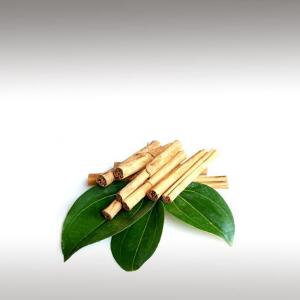

Cinnamon is a tropical evergreen growing up to 15m high, with
strong branches and thick scabrous bark with young shoots speckled
green-orange. It has shiny green, leathery leaves, small white flowers
and oval bluish-white berries. The leaves have a spicy smell when bruised. Botanical
Name: Cinnamomum verum
Common Method of Extraction: Steam Distilled Part Typically Used: Leaf or Bark (The bark oil should be avoided in topical applications.) Color: Golden Yellow/Brown It has a yellow tinge which is different from the red-brown Consistency: Slightly oily feeling Perfumery Note: MiddleStrength of Initial Aroma: Strong. Flat, warm, earthy spice.
The Cinnamon Leaf oil is extracted by steam distillation from the leaves and twigs. The leaves left after trimming the cut stems, as well as those obtained from pruning operations, provide the raw material for production of cinnamon leaf oil. They are usually allowed to dry for a few days before distillation.
Cinnamon Leaf Oil (Cinnamomum verum) has a warm, spicy aroma.
Cinnamon has been a highly prized commodity since antiquity and is one of the most recognizable scents in the world. The chemical breakdown of Cinnamon leaf oil is similar to that of Clove bud.
Extraction cinnamon oil:
The leaves and twigs or inner dried bark are subjected to steam distillation. The leaves yield 1.6 - 1.8 % and the bark 0.5 - 1.00 % oil. Usually this essential oil is extracted from the leaves, as it yields a more delicate oil.
Chemical composition:
The main chemical components of the essential oil, obtained from the leaves, are eugenol, eugenol acetate, cinnamic aldehyde and benzyl benzoate.
Cinnamon oil's benefit lies in its toning and calming effect on the respiratory tract, the nervous system, and in the easing of colds and influenza, as well as period pains.
Common Method of Extraction: Steam Distilled Part Typically Used: Leaf or Bark (The bark oil should be avoided in topical applications.) Color: Golden Yellow/Brown It has a yellow tinge which is different from the red-brown Consistency: Slightly oily feeling Perfumery Note: MiddleStrength of Initial Aroma: Strong. Flat, warm, earthy spice.
The Cinnamon Leaf oil is extracted by steam distillation from the leaves and twigs. The leaves left after trimming the cut stems, as well as those obtained from pruning operations, provide the raw material for production of cinnamon leaf oil. They are usually allowed to dry for a few days before distillation.
Cinnamon Leaf Oil (Cinnamomum verum) has a warm, spicy aroma.
Cinnamon has been a highly prized commodity since antiquity and is one of the most recognizable scents in the world. The chemical breakdown of Cinnamon leaf oil is similar to that of Clove bud.
Extraction cinnamon oil:
The leaves and twigs or inner dried bark are subjected to steam distillation. The leaves yield 1.6 - 1.8 % and the bark 0.5 - 1.00 % oil. Usually this essential oil is extracted from the leaves, as it yields a more delicate oil.
Chemical composition:
The main chemical components of the essential oil, obtained from the leaves, are eugenol, eugenol acetate, cinnamic aldehyde and benzyl benzoate.
Cinnamon oil's benefit lies in its toning and calming effect on the respiratory tract, the nervous system, and in the easing of colds and influenza, as well as period pains.
Submitted by OperaDreamhouse (May 4, 2014)
Cape Gold Essential Oil (Helichrysum Splendidum) ☸ Essential oils ☸ Base / General
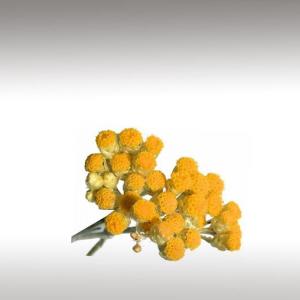

Helichrysum splendidum is indeed a splendid shrub with shining,
silver-grey foliage and a mass of golden everlasting flowers in
midsummer. Helichrysum splendidum occurs naturally in the summer
rainfall areas of South Africa, from the Swartberg and Outeniqua
mountains in the southern Cape through Eastern Cape, Kwazulu-Natal, Free
State, Swaziland, Lesotho to Tropical Africa. Along this wide
distribution this evergreen and frost hardy shrub can be found on rocky
slopes, forest margins, stream gullies and mountain tops.
Submitted by OperaDreamhouse (May 2, 2014)
Cape Camomile Essential Oil (Eriocephalus Punctulatus) ☸ Essential oils ☸ Base / General
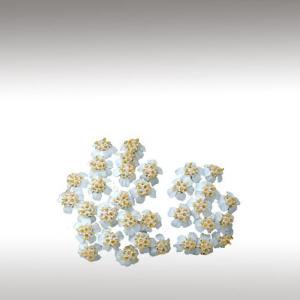

Eriocephalus punctulatus (Asteraceae), ”Cape Chamomile“, is an endemic plant growing on the north-east slopes of the Drakensberge in the Province Freestate (South Africa). It is a white flowering small shrub with fleshy, gland dotted leaves.
Botanical Name: Eriocephalus punctulatus
Common Method of Extraction: Steam Distilled
Part Typically Used: Flowers
Color: Blue to blue / green
Consistency: Thin, clear, a medium viscosity
Perfumery Note: Middle to Top
Strength of Initial Aroma: Fruity, Floral. Diffusive, powerful, boozy, honeyed, floral/fruity (apple-pear) aroma with soft spice and herbaceous, earthy undertones; the fruitiness carries through in the long drydown.
Common Method of Extraction: Steam Distilled
Part Typically Used: Flowers
Color: Blue to blue / green
Consistency: Thin, clear, a medium viscosity
Perfumery Note: Middle to Top
Strength of Initial Aroma: Fruity, Floral. Diffusive, powerful, boozy, honeyed, floral/fruity (apple-pear) aroma with soft spice and herbaceous, earthy undertones; the fruitiness carries through in the long drydown.
Cape Chamomile Essential Oil has the most apealing aroma of all Chamomile varieties, and is used in high class perfumes. Cape Chamomile Oil is stunning clear blue color is due to the presence of nourishing Chamazulene, a chemical compound that gives the oil its anti-inflammatory and skin rejuvenation benefits.
Submitted by OperaDreamhouse (May 2, 2014)
Sweet Orange Essential Oil (Citrus Sinensis) ☸ Essential oils ☸ Base / General
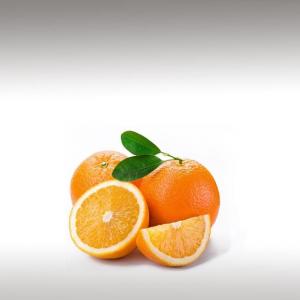
 Botanical Name: Citrus sinensis
Botanical Name: Citrus sinensisCommon Method of Extraction: Cold Pressed / Expressed/steam distillation
Part Typically Used: Citrus Rind (Peel)
Color: Greenish Orange. Yellow to orange in color
Consistency: Thin
Perfumery Note: Top
Shelf life: 6 months
Strength of Initial Aroma: Medium - Strong. Citrusy, sweet, reminiscent of orange peels, but more concentrated.
Sweet Orange oil has a sweet, fresh and tangy smell, is yellow to orange in color and watery in viscosity.
Orange trees have been the most cultivated tree fruit in the world since 1987. Orange trees are widely grown in tropical and subtropical climates for their sweet fruit. The fruit of the Orange tree can be eaten fresh, or processed for its juice or fragrant peel. Sweet Oranges currently account for approximately 70% of Citrus production.
Submitted by OperaDreamhouse (May 2, 2014)
Sweet Lemon Essential Oil (Citrus Limonum) ☸ Essential oils ☸ Base / General
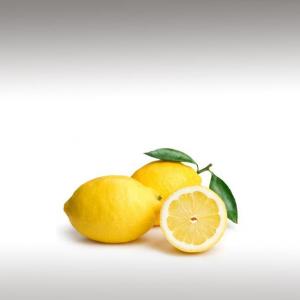

Botanical Name: Citrus limonum
Common Method of Extraction: Lemon oil is extracted from the fresh fruit peel by cold expression.
Part Typically Used: Fresh fruit peel
Color: Pale Yellow to Deep Yellow
Consistency: Thin
Perfumery Note: Top
Self life: 8 - 10 months
Strength of Initial Aroma: Clean smelling citrus. Sharp and sweet scent is undeniable, and one of the easier oils to discriminate quality by aroma. Strong smell.
This well-known Citrus fruit is a very common and helpful essential oil. The oil is extracted from the rind of fruit, not made from the juices. Lemon trees can grow from 10 - 20 feet tall. The fruit start off as fragrant white flowers.
Lemon trees are very common in Brazil, Israel, The United States, and Argentina. Lemon trees were not well known until the 17th century.
The name is derived from the Arabic "Laimun" or the Persian "Limun". The tree was brought to Europe by the Crusaders in the Middle Ages and the fruit has a good content of Vitamins A, B and C - an ounce a day was given to sailors in the Royal Navy to alleviate scurvy and other Vitamin deficiencies.
They entered Europe near southern Italy no later than the 1st century AD, during the time of Ancient Rome. However, they were not widely cultivated.
They were later introduced to Persia and then to Iraq and Egypt around 700 AD. The Lemon was first recorded in literature in a 10th-century Arabic treatise on farming, and was also used as an ornamental plant in early Islamic gardens. It was distributed widely throughout the Arab world and the Mediterranean region between 1000 and 1150.
The shelf life of Lemon oil is only 8 - 10 months, if it is to be used in aromatherapy, but can still be used in fragrance therapies after this time, such as vapor therapy.
Dilution is recommended for topical and internal use. Dilute for use on sensitive areas such as face, mucus membranes, or genital area.
Submitted by OperaDreamhouse (May 2, 2014)
Eucalyptus Essential Oil (Eucalyptus Staigeriana) ☸ Essential oils ☸ Base / General
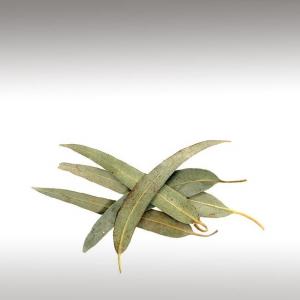

Eucalyptus Staigeriana, Lemon Ironbark or Lemon-Scented Ironbark, is a
small rough barked Sclerophyll tree that grows naturally in pure stands
on hills in the Palmer River region of Cape York, North Queensland,
Australia.
The complex Eucalyptus Staigeriana essential oil is distilled from the leaves and used for flavouring, perfumery and aromatherapy. It has a fruity-lemon fragrance with rosemary-like back tones. Eucalyptus Staigeriana fresh weight leaves yield 2,9-3,4% essential oil. It contains a range of essential oil components, including geranial, methyl geranate, geranyl acetate, limonene, phellandrene, neral, terpinolene and geraniol.
Submitted by OperaDreamhouse (May 1, 2014)
Bergamot Essential Oil (Citrus Aurantium ssp Bergamia) ☸ Essential oils ☸ Base / General
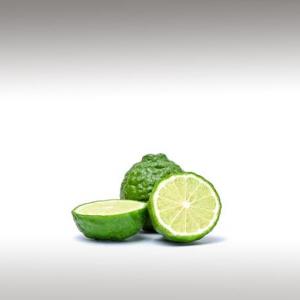

Botanical Name: Citrus autarium ssp Bergamia
Botanical Origin: South East Asia
Common Method of Extraction: Ripe and unripe fruit peel
Part Typically Used: Cold expression (cold pressed)
Color: From green to greenish-yellow
Consistency: Watery viscosity
Perfumery Note: Top
Shelf Life: 2 - 3 years
Strength of Initial Aroma: Basically citrus, fruity and sweet, with a warm spicy floral quality and is reminiscent of neroli as well as lavender oil.
Blends Well With: Black pepper, clary sage, cypress, frankincense, geranium, jasmine, mandarin, nutmeg, orange, rosemary, sandalwood, vetiver, ylang-ylang, lavender, neroli essential oils.
Common name: Bergamot orange
Chemical structure: A-pinene, myrcene, limonene, a-bergaptene, b-bisabolene, linalool, linalyl acetate, nerol, neryl acetate, geraniol, geraniol acetate and a-terpineol.
Note: Bergamot oil must be protected from sunlight, because bergaptene, one of its components, becomes poisonous if exposed to sunlight. That is why the oil should always be stored in dark bottles in dark places.
The scientific name of bergamot is Citrus aurantium var. or Citrus Bergamia. It is a tropical plant, but thrives in Europe as well. Its powerful aroma makes it a popular component in many perfumes, and it is often used as the all-important “top note”.
Bergamot essential oil is amongst the more expensive of the cold pressed citrus oils, but is well worth the cost. Its aroma is reminiscent to that of orange, but it is more complex and almost has an underlying floral characteristic to it.
Bergamot essential oil is extracted from the fruit of a small tree. This tree is native to South East Asia, but was introduced to Europe, and particularly Italy and is also found in the Ivory Coast, Morocco, Tunisia and Algeria.
The word bergamot is etymologically derived from the Italian word "bergamotto". It is related to French bergamote, from Italian bergamotto, of Turkish origin: beg-armudi or beg armut ("prince's pear" or "prince of pears"). The most plausible theory regarding its source claims that Christopher Columbus brought the bergamot tree back on a voyage from the Canary Islands to Barcelona, Spain.
From Spain it was introduced into the Italian city of Bergamo, Lombardy, where the oil is reported to have been first produced.
Citrus bergamia is a small tree that blossoms during the winter. The juice tastes less sour than lemon, but more bitter than grapefruit. Bergamot essential oil is extracted from the fruit of a small tree.
A citrus tree (Citrus aurantium) is grow up to four meters high, with star-shaped flowers and smooth leaves, bearing citrus fruit resembling a cross between an orange and a grapefruit, but in a pear-shape. The fruit ripens from green to yellow.
The bergamot orange is unrelated to the herbs known as bergamot or wild bergamot, Monarda didyma and Monarda fistulosa, which are in the mint family, and are named for their similar aroma.
Citrus bergamia has also been classified as Citrus aurantium subsp. bergamia (subspecies of bitter orange). Citrus bergamia is sometimes confused but is not the same as Citrus medica (citron, the yellow fruit of which is also known as etrog) or Citrus limetta ("sweet lemon" or "sweet lime").
Trees do not bear any fruit until 3 years after grafting, by which time the tree will be 6 or 7 years old. Initially, a tree will bear 20 to 30 fruits, and at full maturity 12 years later it can produce up 300 fruits. After 15 years each tree can produce around 1 kilo of essential oil and will remain productive until the age of 70 or 80 when it reaches the end of its industrious life.
The essential oil is obtained by cold expression of the peel which produces a beautiful dark green oil with a delightful fresh, citrusy top note and sweet, herbal-peppery heart notes.
Botanical Origin: South East Asia
Common Method of Extraction: Ripe and unripe fruit peel
Part Typically Used: Cold expression (cold pressed)
Color: From green to greenish-yellow
Consistency: Watery viscosity
Perfumery Note: Top
Shelf Life: 2 - 3 years
Strength of Initial Aroma: Basically citrus, fruity and sweet, with a warm spicy floral quality and is reminiscent of neroli as well as lavender oil.
Blends Well With: Black pepper, clary sage, cypress, frankincense, geranium, jasmine, mandarin, nutmeg, orange, rosemary, sandalwood, vetiver, ylang-ylang, lavender, neroli essential oils.
Common name: Bergamot orange
Chemical structure: A-pinene, myrcene, limonene, a-bergaptene, b-bisabolene, linalool, linalyl acetate, nerol, neryl acetate, geraniol, geraniol acetate and a-terpineol.
Note: Bergamot oil must be protected from sunlight, because bergaptene, one of its components, becomes poisonous if exposed to sunlight. That is why the oil should always be stored in dark bottles in dark places.
The scientific name of bergamot is Citrus aurantium var. or Citrus Bergamia. It is a tropical plant, but thrives in Europe as well. Its powerful aroma makes it a popular component in many perfumes, and it is often used as the all-important “top note”.
Bergamot essential oil is amongst the more expensive of the cold pressed citrus oils, but is well worth the cost. Its aroma is reminiscent to that of orange, but it is more complex and almost has an underlying floral characteristic to it.
Bergamot essential oil is extracted from the fruit of a small tree. This tree is native to South East Asia, but was introduced to Europe, and particularly Italy and is also found in the Ivory Coast, Morocco, Tunisia and Algeria.
The word bergamot is etymologically derived from the Italian word "bergamotto". It is related to French bergamote, from Italian bergamotto, of Turkish origin: beg-armudi or beg armut ("prince's pear" or "prince of pears"). The most plausible theory regarding its source claims that Christopher Columbus brought the bergamot tree back on a voyage from the Canary Islands to Barcelona, Spain.
From Spain it was introduced into the Italian city of Bergamo, Lombardy, where the oil is reported to have been first produced.
Citrus bergamia is a small tree that blossoms during the winter. The juice tastes less sour than lemon, but more bitter than grapefruit. Bergamot essential oil is extracted from the fruit of a small tree.
A citrus tree (Citrus aurantium) is grow up to four meters high, with star-shaped flowers and smooth leaves, bearing citrus fruit resembling a cross between an orange and a grapefruit, but in a pear-shape. The fruit ripens from green to yellow.
The bergamot orange is unrelated to the herbs known as bergamot or wild bergamot, Monarda didyma and Monarda fistulosa, which are in the mint family, and are named for their similar aroma.
Citrus bergamia has also been classified as Citrus aurantium subsp. bergamia (subspecies of bitter orange). Citrus bergamia is sometimes confused but is not the same as Citrus medica (citron, the yellow fruit of which is also known as etrog) or Citrus limetta ("sweet lemon" or "sweet lime").
Trees do not bear any fruit until 3 years after grafting, by which time the tree will be 6 or 7 years old. Initially, a tree will bear 20 to 30 fruits, and at full maturity 12 years later it can produce up 300 fruits. After 15 years each tree can produce around 1 kilo of essential oil and will remain productive until the age of 70 or 80 when it reaches the end of its industrious life.
The essential oil is obtained by cold expression of the peel which produces a beautiful dark green oil with a delightful fresh, citrusy top note and sweet, herbal-peppery heart notes.
Submitted by OperaDreamhouse (May 1, 2014)
Bergamot Essential Oil (Citrus Aurantium ssp Bergamia) ☸ Essential oils ☸ Food / Cooking


Bergamot essential oil drops are using in black tea. The inclusion of bergamot essential oil in regular black tea is then given a different name - Earl Grey.
Submitted by OperaDreamhouse (May 1, 2014)
Bergamot Essential Oil (Citrus Aurantium ssp Bergamia) ☸ Essential oils ☸ Medicine / Health


Therapeutic Properties:
Analgesic
Antidepressant
Antiseptic
Antibiotic
Anti-spasmodic
Stomachic
Calmative
Cicatrisant
Deodorant
Digestive
Febrifuge
Vermifuge
Vulnerary
Fields of application: Bergamot oil can be used in the treatment of depression, stress, tension, fear, hysteria, infection (all types including skin), anorexia, psoriasis, eczema, general convalescence, for relaxed and happy feeling, relieving urinary tract infections, boosting the liver, spleen and stomach, while fighting oily skin, acne, cold sores.
Contraindications: Bergamot oil can cause burns when used on a sensitive skin which is then exposed to sunlight, as the high content of bergaptene can cause photo-toxicity. It is advisable to keep out of the sun if this oil is used on the skin. Even when the ingredient Bergaptene (Furocoumarin) is removed from the oil and photo toxicity is therefore minimized, it is still advisable to keep treated skin out of the sun, and to use it in concentrations of less than 1 %. Bergapten is that material, which causing skin photosensibility (increased skin sensitivity to sunlight, which affects the pigmentation spots in contact with essential oils in that particular site).
Pregnancy / Lactation: Avoid during pregnancy and breast-feeding.
Children: Bergamot essential oil is a phototoxic. Do not use on children younger than 5 years of age. In older years children like very much bergamot essential oil smell. We find that children especially find Bergamot enjoyable.
Guidelines: Do not expose skin to sunlight for 12 hours after application.
The fruit and essential oil have been used in folk medicine since the 16th century, initially in Italy and then later throughout Europe as its popularity began to spread. At first it was employed for its antiseptic properties and its ability to reduce a fever, and later during Napoleonic times it became popular as a fragrance. It is still used today in high class perfumes.
The use of bergamot essential oil with bergaptenu is increased sensitivity of the skin to UV rays on the weight of the coumarin: bergamotino and bergapteno. For that reason, in massage and cosmetic formulas is better to use bergamot essential oil without bergapteno, of course, smell is not as rich as pure bergamot oil.
The components of bergamot oil, like alpha pinene and limonene, are antidepressant and stimulating in nature. They create a feeling of freshness, joy and energy in cases of sadness and depression by improving the circulation of the blood. They also stimulate hormonal secretions, thereby helping to maintain proper metabolic rates.
Certain components of the essential oil of Bergamot are antibiotic and disinfectant in nature. They inhibit the growth of germs, virus and fungi. They also effectively prohibit infections, including those of the skin.
Bergamot essential oil reduces the feeling of pain in the body. It stimulates secretion of certain hormones which lessen sensitivity of nerves to pain. Therefore, it is very helpful in case of headaches, sprains, muscle aches or any other symptoms or ailments which require a heavy dosage of analgesic pills.
The flavonoids present in bergamot oil are very good relaxants as well. They soothe nerves and reduce nervous tension, anxiety, and stress, all of which can help cure or treat ailments associated with stress such as sleeplessness, high blood pressure, insomnia, and depression.
As discussed above, bergamot essential oil activates and increases secretions of the digestive acids, enzymes and bile and facilitates digestion. It also synchronizes and regulates the peristaltic motion of the intestines and in this way, it quickens the digestive process and reduces strain to the intestinal tract. In this way, bergamot essential oil can reduce constipation, make bowel movements more regular, and prevent gastrointestinal complications like colorectal cancer and other uncomfortable or dangerous conditions.
Bergamot is an antibiotic, it fights infections that arise from viruses, bacteria and protozoa that cause fever, including influenza (virus), malaria (protozoa) and typhoid (typhus bacteria). It stimulates the metabolic system and gland secretions, thereby providing a feeling of warmth and resulting in additional secretion (perspiration or sweat) from the Eccrine glands (sweat glands) and sebaceous (sebum) glands, thus reducing body temperature.
It relaxes nerves and muscles, thereby giving quick relief for cramps, convulsions, and painful muscle contractions. This can also be important for people with chronic coughing or respiratory conditions, as well as asthma, which is similar to a spasmodic reaction.
Bergamot essential oil is also a tonic, meaning that it tones up the respiratory, circulatory, digestive, excretory, and nervous system, as well as skin and muscles. It is also anticongestive and is used in vaporizers to relieve congestion and respiratory problems, particularly during coughs and colds.
Many aromatherapy books recommend using 1 drop of undiluted bergamot essential oil on insect bites and cold sores because of its excellent antiseptic and healing properties.
This essentia oil is helpful when dealing with dependency or compulsiveness that may be associated with smoking, drugs or alcohol.
According to the ancient healing system of Ayurveda, bergamot essential oil decreases problems caused by Vata and Kapha (the biological forces of wind and phlegm). By balancing "phlegm", bergamot oil helps to reduce sluggishness, complacency and melancholy. Its mood-uplifting qualities support heightened and brightened energy.
Analgesic
Antidepressant
Antiseptic
Antibiotic
Anti-spasmodic
Stomachic
Calmative
Cicatrisant
Deodorant
Digestive
Febrifuge
Vermifuge
Vulnerary
Fields of application: Bergamot oil can be used in the treatment of depression, stress, tension, fear, hysteria, infection (all types including skin), anorexia, psoriasis, eczema, general convalescence, for relaxed and happy feeling, relieving urinary tract infections, boosting the liver, spleen and stomach, while fighting oily skin, acne, cold sores.
Contraindications: Bergamot oil can cause burns when used on a sensitive skin which is then exposed to sunlight, as the high content of bergaptene can cause photo-toxicity. It is advisable to keep out of the sun if this oil is used on the skin. Even when the ingredient Bergaptene (Furocoumarin) is removed from the oil and photo toxicity is therefore minimized, it is still advisable to keep treated skin out of the sun, and to use it in concentrations of less than 1 %. Bergapten is that material, which causing skin photosensibility (increased skin sensitivity to sunlight, which affects the pigmentation spots in contact with essential oils in that particular site).
Pregnancy / Lactation: Avoid during pregnancy and breast-feeding.
Children: Bergamot essential oil is a phototoxic. Do not use on children younger than 5 years of age. In older years children like very much bergamot essential oil smell. We find that children especially find Bergamot enjoyable.
Guidelines: Do not expose skin to sunlight for 12 hours after application.
The fruit and essential oil have been used in folk medicine since the 16th century, initially in Italy and then later throughout Europe as its popularity began to spread. At first it was employed for its antiseptic properties and its ability to reduce a fever, and later during Napoleonic times it became popular as a fragrance. It is still used today in high class perfumes.
The use of bergamot essential oil with bergaptenu is increased sensitivity of the skin to UV rays on the weight of the coumarin: bergamotino and bergapteno. For that reason, in massage and cosmetic formulas is better to use bergamot essential oil without bergapteno, of course, smell is not as rich as pure bergamot oil.
The components of bergamot oil, like alpha pinene and limonene, are antidepressant and stimulating in nature. They create a feeling of freshness, joy and energy in cases of sadness and depression by improving the circulation of the blood. They also stimulate hormonal secretions, thereby helping to maintain proper metabolic rates.
Certain components of the essential oil of Bergamot are antibiotic and disinfectant in nature. They inhibit the growth of germs, virus and fungi. They also effectively prohibit infections, including those of the skin.
Bergamot essential oil reduces the feeling of pain in the body. It stimulates secretion of certain hormones which lessen sensitivity of nerves to pain. Therefore, it is very helpful in case of headaches, sprains, muscle aches or any other symptoms or ailments which require a heavy dosage of analgesic pills.
The flavonoids present in bergamot oil are very good relaxants as well. They soothe nerves and reduce nervous tension, anxiety, and stress, all of which can help cure or treat ailments associated with stress such as sleeplessness, high blood pressure, insomnia, and depression.
As discussed above, bergamot essential oil activates and increases secretions of the digestive acids, enzymes and bile and facilitates digestion. It also synchronizes and regulates the peristaltic motion of the intestines and in this way, it quickens the digestive process and reduces strain to the intestinal tract. In this way, bergamot essential oil can reduce constipation, make bowel movements more regular, and prevent gastrointestinal complications like colorectal cancer and other uncomfortable or dangerous conditions.
Bergamot is an antibiotic, it fights infections that arise from viruses, bacteria and protozoa that cause fever, including influenza (virus), malaria (protozoa) and typhoid (typhus bacteria). It stimulates the metabolic system and gland secretions, thereby providing a feeling of warmth and resulting in additional secretion (perspiration or sweat) from the Eccrine glands (sweat glands) and sebaceous (sebum) glands, thus reducing body temperature.
It relaxes nerves and muscles, thereby giving quick relief for cramps, convulsions, and painful muscle contractions. This can also be important for people with chronic coughing or respiratory conditions, as well as asthma, which is similar to a spasmodic reaction.
Bergamot essential oil is also a tonic, meaning that it tones up the respiratory, circulatory, digestive, excretory, and nervous system, as well as skin and muscles. It is also anticongestive and is used in vaporizers to relieve congestion and respiratory problems, particularly during coughs and colds.
Many aromatherapy books recommend using 1 drop of undiluted bergamot essential oil on insect bites and cold sores because of its excellent antiseptic and healing properties.
This essentia oil is helpful when dealing with dependency or compulsiveness that may be associated with smoking, drugs or alcohol.
According to the ancient healing system of Ayurveda, bergamot essential oil decreases problems caused by Vata and Kapha (the biological forces of wind and phlegm). By balancing "phlegm", bergamot oil helps to reduce sluggishness, complacency and melancholy. Its mood-uplifting qualities support heightened and brightened energy.
Submitted by OperaDreamhouse (May 1, 2014)
Bergamot Essential Oil (Citrus Aurantium ssp Bergamia) ☸ Essential oils ☸ Beauty / Cosmetics


Bergamot essential oil has antibacterial, deodorising, refreshing, soothing, and uplifting properties which make it excellent for body skincare preparations, for ensuring healthy and vital skin. Bergamot essential oil has a fresh, citrus and slightly spicy aroma and is powerfully refreshing, uplifting and invigorating and helps maintain a balanced mood.
This property of bergamot oil is the reason behind its extensive use in cosmetics and skin care products such as beauty soaps, creams, and lotions. Cicatrisant means a property or an agent which helps scars and other marks on the skin to disappear. It also makes the distribution of pigments and melanin even and uniform, resulting in the fading away of marks and an even, attractive skin tone. This essential oil is commonly used to eliminate the unsightly effects of acne, which can leave noticeable scars and marks on the affected areas for many years.
Bergamot essential oil supports healthy skin.
This property of bergamot oil is the reason behind its extensive use in cosmetics and skin care products such as beauty soaps, creams, and lotions. Cicatrisant means a property or an agent which helps scars and other marks on the skin to disappear. It also makes the distribution of pigments and melanin even and uniform, resulting in the fading away of marks and an even, attractive skin tone. This essential oil is commonly used to eliminate the unsightly effects of acne, which can leave noticeable scars and marks on the affected areas for many years.
Bergamot essential oil supports healthy skin.
Submitted by OperaDreamhouse (May 1, 2014)
Bergamot Essential Oil (Citrus Aurantium ssp Bergamia) ☸ Essential oils ☸ Spiritual Practises


The benefits of bergamot include the spiritual and emotional as well. Bergamot releases the need to be in complete control so that we can flow with life more easily. Because this oil opens the heart chakra and is uplifting to the mind, which eases stress and tension in mind, body and soul. Place on the heart to release this patterning and embrace relationships (self and others).
It promotes opening solar plexus and heart chakras:
Third Chakra: solar plexus - Bergamot essential oil helps support the digestive tract, which helps instill confidence in one’s being. Bergamot also relieves pressure from the adrenal glands by relieving tension from the nerves.
Seventh chakra: the crown chakra - Bergamot essential oil assists with the release of negative thoughts and emotions, such as fear, guilt, and unworthiness. This release is important for one to achieve ultimate crown chakra opening through meditation or other spiritual connection.
It promotes opening solar plexus and heart chakras:
Third Chakra: solar plexus - Bergamot essential oil helps support the digestive tract, which helps instill confidence in one’s being. Bergamot also relieves pressure from the adrenal glands by relieving tension from the nerves.
Seventh chakra: the crown chakra - Bergamot essential oil assists with the release of negative thoughts and emotions, such as fear, guilt, and unworthiness. This release is important for one to achieve ultimate crown chakra opening through meditation or other spiritual connection.
Submitted by OperaDreamhouse (May 1, 2014)
Page 42 of 48

